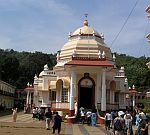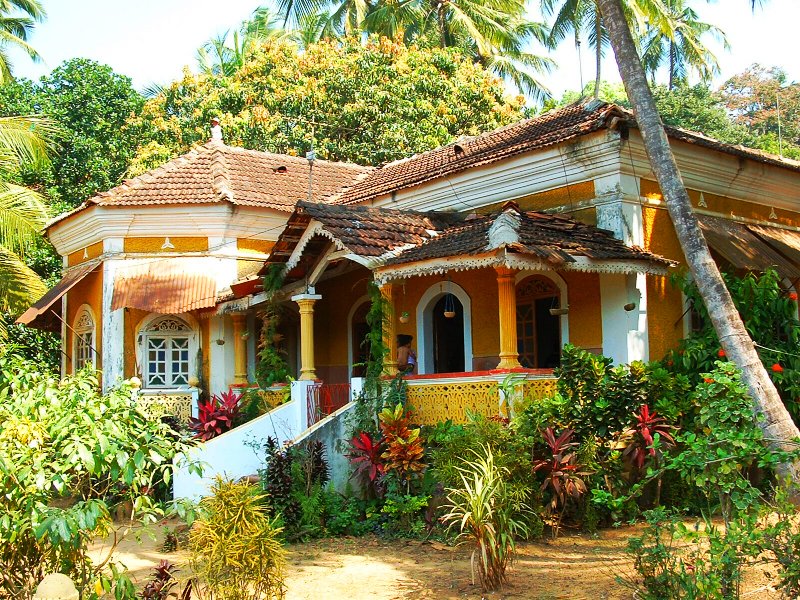
Exploring the history and experiences of mixed heritage persons and inter-racial relationships across the world

Exploring the history and experiences of mixed heritage persons and inter-racial relationships across the world
 It is said that the first Mestizos in Goa where the offspring of the previously Moslem women who were converted to Christianity after the Portuguese conquest of Goa in 1510. These women were the family members of the 6,000 or so Muslim defenders of the city that were slaughtered in the battle led by Portuguese admiral Afonso de Albuquerque by request of a local chieftain, Thimayya, who wished to control the city. Thimayya was appointed ‘Aguazil’, a sort of mayor, an administrator and representative of the local people after the city’s capture.
It is said that the first Mestizos in Goa where the offspring of the previously Moslem women who were converted to Christianity after the Portuguese conquest of Goa in 1510. These women were the family members of the 6,000 or so Muslim defenders of the city that were slaughtered in the battle led by Portuguese admiral Afonso de Albuquerque by request of a local chieftain, Thimayya, who wished to control the city. Thimayya was appointed ‘Aguazil’, a sort of mayor, an administrator and representative of the local people after the city’s capture.
Goa was not the first Portuguese settlement in India. Vasco da Gama on his voyage of discovery first landed at Calicut, South of Goa, in 1498 but the Portuguese were unable to establish a strong presence there with the Dutch then the British vying for trade within the Indian city. By 1663, the power of the Portuguese in Calicut had dwindled and they shifted their interests to thriving Goa.
Today, it is very difficult to determine what percentage of Goa’s 1.3 million strong population is actually of Mestizo descent because since the 1951 Census and prior to India’s annexation of Goa, India does not recognize any racial groups and words like Anglo-Indians are descriptions rather than ethnic terms. This is India’s way of harmonising a very disparate population.
 Religious affiliation data is available and over 30% of the Goan population is Catholics and the vast majority are Hindus. Most of the Catholics have Portuguese family names such as Silva, Sousa, Pereira D'Souza, D'Mello and Fernandes and it would be easy to assume that there is some European ancestry in such families but that is not the case. Many converts to Catholicism changed their second names to Portuguese surnames on baptism though at least one caste retained their Hindu surnames and some families, probably rich and powerful, maintained some link to their former names.
Religious affiliation data is available and over 30% of the Goan population is Catholics and the vast majority are Hindus. Most of the Catholics have Portuguese family names such as Silva, Sousa, Pereira D'Souza, D'Mello and Fernandes and it would be easy to assume that there is some European ancestry in such families but that is not the case. Many converts to Catholicism changed their second names to Portuguese surnames on baptism though at least one caste retained their Hindu surnames and some families, probably rich and powerful, maintained some link to their former names.
People of Goa are known as Goan, in Portuguese, Goês (male) or Goesa (female), as opposed to Goanese, which is considered derogatory in some circles. The natives here are Konkani people who traditionally inhabit the states of Goa, Maharashtra, Karnataka and some parts of Kerala. Originally Hindus, they later were converted to Islam or later Catholicism under the Portuguese.
Admiral Afonso de Albuquerque is credited with encouraging a policy of miscegenation throughout the Portuguese Asian Empire which has resulted in many mixed communities in the region. The Hindu caste system and the Islamic marriage code may have made it a little more difficult in Goa but it is estimated that 1 in 3 Europeans in India during this period had local wives. The offspring in Portuguese Asia, Mestizos, were looked down upon by the local population belonging neither to caste or Islam but were favourably viewed by the Portuguese rulers.
The Portuguese certainly made great efforts to convert the population either through Catholic missionary efforts or as a result of the Inquisition. The Goa Inquisition was requested by St. Francis Xavier, patron saint of Goa, in 1545 and established in 1560 for the whole of the Asian empire and was only finally abolished in 1812. Punishing relapsed converts, those reverting to their previous religion or continuing to practice ancient customs proved lucrative for the Inquisitors as land and property were confiscated. It is impossible to know how many families were affected by the Inquisition as records were destroyed when it was abolished.
The Inquisition intensified after the Cuncolim Revolt in 1583 when there was a massacre of 14 or so Catholics including all the five Jesuit missionaries in Cuncolim. This protest, the first against the Portuguese, was against attempts to destroy Hindu temples and force the population to convert. The Portuguese retaliated to this by killing without trial all the local leaders, except one or two who escaped the Assolna fort were they had been summoned under the pretext of a peaceful resolution of the matter.
Many Japanese immigrants fleeing anti-Christian persecutions in 1596 and Japanese slaves are said to have created a Japanese community by the end of the 16th century and some are said to have inter-married with local Catholic converts.
Despite there being evidence of African slave imports north of Goa in the Siddi ethnic group, there is next to no evidence of African influence in Goa. The Siddi are descendants of slaves, sailors, servants and merchants from the Bantu-speaking parts of East Africa and many of the slaves are said to have been sold to local powerful people by Portuguese slave traders. Some are said to be escaped slaves from other parts in the region and that may of cause include Goa.
The Dutch still had interest in Goa and attempted to capture it in 1603 which was followed by a cholera epidemic in 1635, and again in 1639. The Dutch blockades were both unsuccessful but led to the start of the demise of the old Goan city. Eventually New Goa, now Panaji, became the seat of Government and most Europeans moved to there.
 In 1757, it was decreed that all Portuguese East Indies subjects were Portuguese citizens but despite this some priests saw it in their interests to try and break away from the European empire in 1787 in what came to be known as the Conspiracy of the Pintos. The basis of the unrest appears to a protest against the church’s reluctance to allow local Christians to occupy Church office and was encouraged by what was happening in France just prior to the revolution.
In 1757, it was decreed that all Portuguese East Indies subjects were Portuguese citizens but despite this some priests saw it in their interests to try and break away from the European empire in 1787 in what came to be known as the Conspiracy of the Pintos. The basis of the unrest appears to a protest against the church’s reluctance to allow local Christians to occupy Church office and was encouraged by what was happening in France just prior to the revolution.
With Brazil’s independence in 1822, the Goans also obtained some recognition for themselves. As citizens they were allowed to elect members of Parliament and whilst the Europeans officially supported mestizo candidates, local Goan candidates were eventually became the first to occupy seats in parliament. One of the parliamentarians was appointed Prefect of Goa in 1834 but was ousted by mestizo controlled elements. This record is one of the last I could find that points to a sizeable mestizo population in Goa.
Even with India’s independence in 1947, Goa remained a Portuguese enclave despite the newly independent state’s attempt to peacefully annex the state. On December 16, 1961 in 'Operation Vijay', Indian troops crossed the border into Goa and with land, sea, and air strikes resulted in the surrender of the Portuguese on the 19th. The United Nations tried condemning the invasion but it was vetoed by the USSR. Goans voted in a referendum to become an autonomous, federally administered territory until it was admitted to Indian statehood in 1987.
Following the Indian invasion, hundreds of Goans opted to leave for Portugal via Karachi and were provided free passage to Lisbon. Those who had no other means were temporarily lodged at Rua de Junqueira, in the old warehouses of the Cordoaria (rope factory) in Lisbon. It is likely, but uncorroborated, that many of those immigrants would have been mestizos expecting a much reduced power base under the Indians. Many also left to other parts of the Portuguese empire in Africa and Asia. Many of the Indian descendants in what was Portuguese Africa are from Goa with records of Indian soldiers fighting in the Portuguese army both in Angola and Mozambique. However independence in Angola and in Mozambique both in 1975 meant with the returning Europeans, another Goan influx into Portugal but noticeable numbers did move to the neighbouring countries of Namibia, South Africa and what was then Rhodesia, now Zimbabwe.
Portuguese law still allows those born in Goa before 1961 or their immediate descendants to ‘recover’ their Portuguese nationality, many Goans have in recent times sought to take advantage of this and today there are some 50,000 Goans in Portugal. Another sizeable population exist in Australia with about 20,000 in Melbourne alone.
It is likely that some inter-marriage in Portugal and Australia is taking place within the Goan population but it is noticeable in Africa the reluctance of Indians to inter-marry with African or other mixed race populations.
Any mestizos who remained in India after 1961 are likely to have been re-assimilated into the Goan ethnic catholic population.
Links